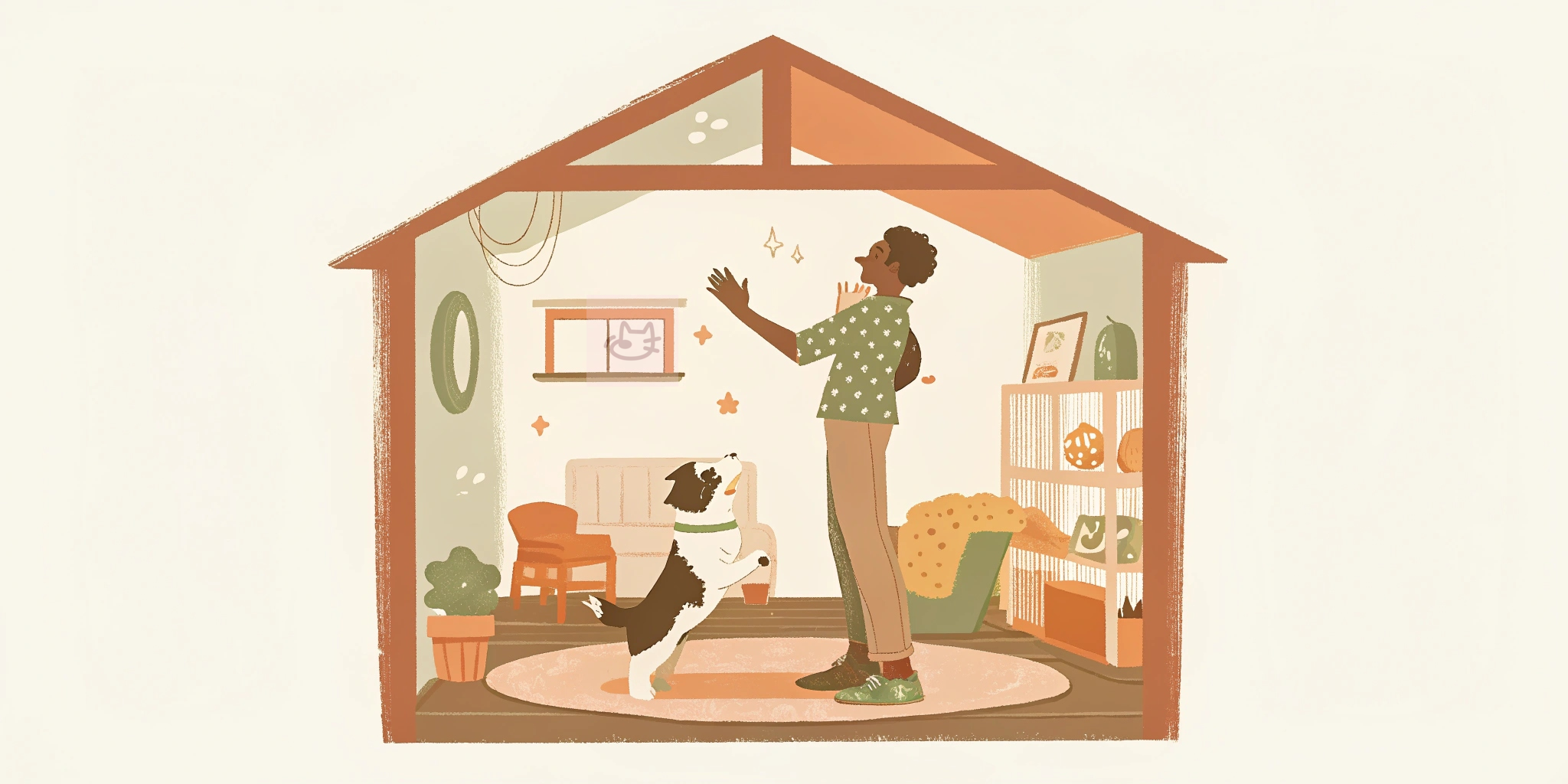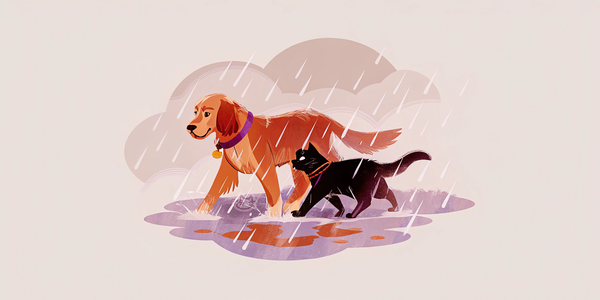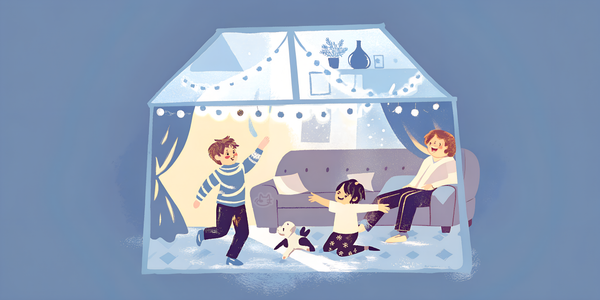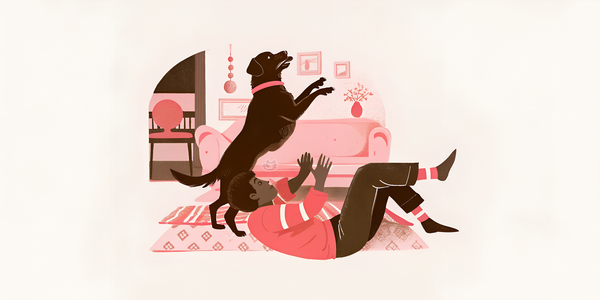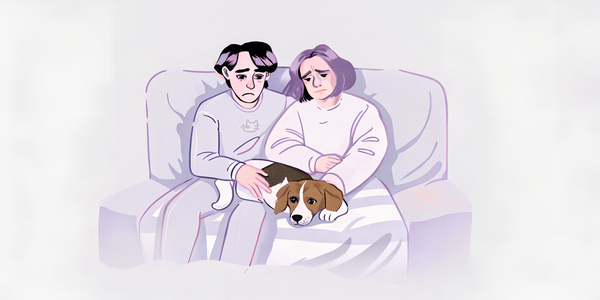Dog Anxiety is real. Here's the expert solutions.
Expert-backed solutions for dog anxiety in Indian cities. Handle traffic stress, pollution effects, and festival fears with proven techniques from veterinary behaviorists.
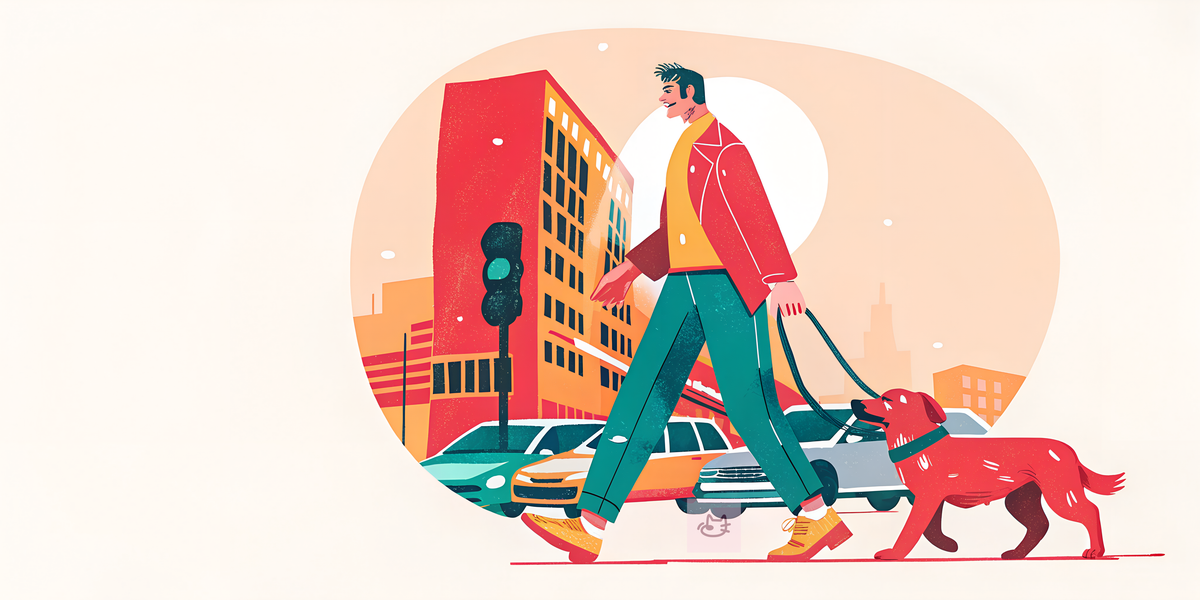
City life in India creates unique stress for dogs. Traffic noise, air pollution, crowded streets, and festival celebrations can make dogs anxious and fearful.
According to research published in Scientific Reports, 39.2% of dogs suffer from noise sensitivity globally, with urban environments significantly increasing anxiety levels. Indian cities present additional challenges that make pet anxiety even more common.
This guide provides expert-backed solutions for dog anxiety in Indian cities. You'll learn to handle everything from traffic fears to festival phobias using methods recommended by veterinary behaviorists.
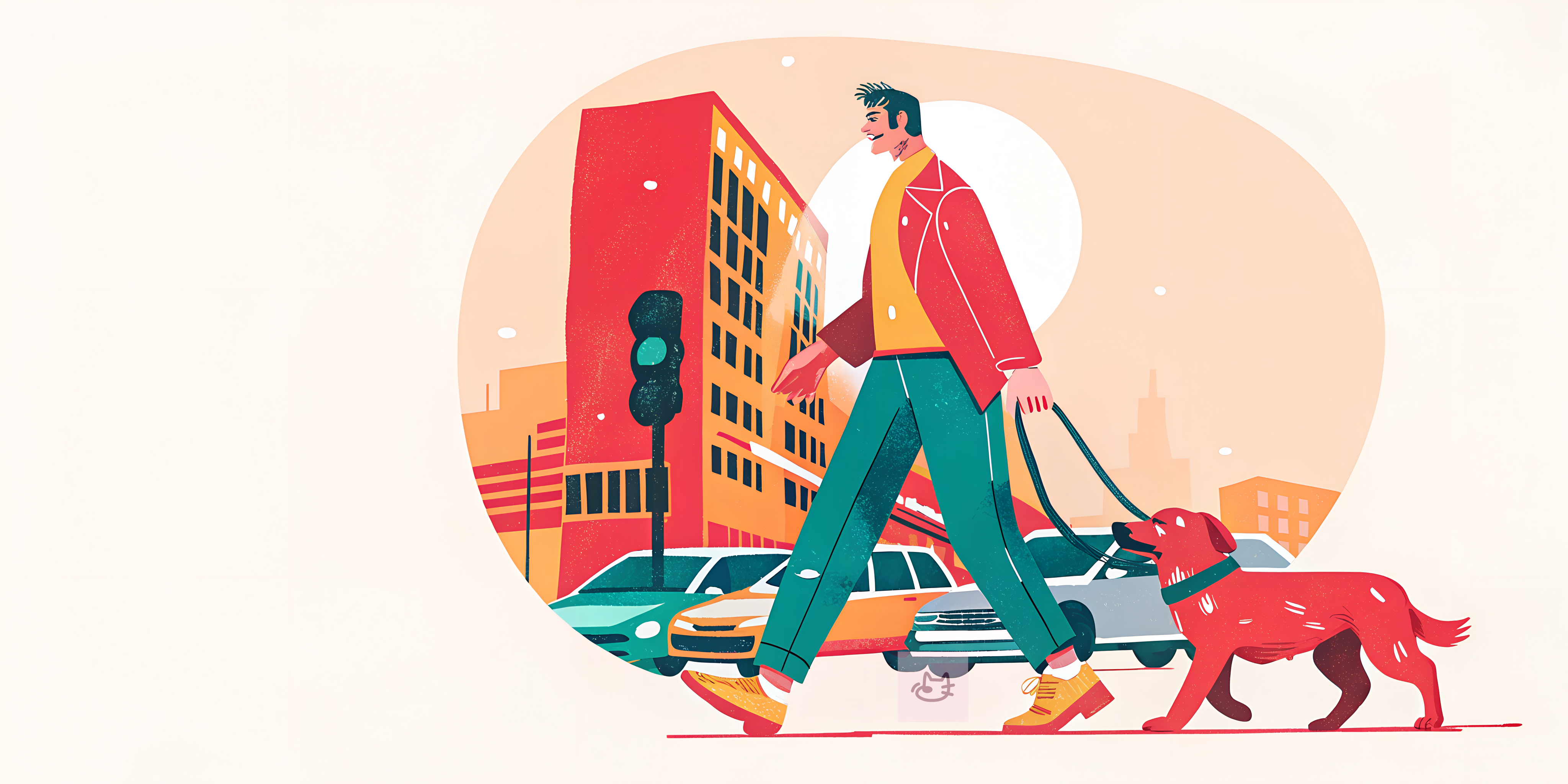
What Causes Anxiety in Urban City Dogs
Traffic noise is constant in all metro cities. According to WHO data, air pollution kills millions annually, and the same environmental stressors affect our pets.
Air pollution significantly impacts dogs' breathing and mood. PETA India reports that "high air pollution can cause animals to suffer greatly from severe respiratory problems." With six of the world's 10 most polluted cities in India, this affects millions of urban dogs.
Crowded spaces with lots of people, other dogs, and vehicles create anxiety for dogs who aren't used to crowds. Indian streets are much busier than quiet suburban areas.
Festival celebrations happen frequently in India. Diwali crackers, wedding processions, and religious festivals with loud music scare dogs who haven't been prepared for these sounds.
Small apartment living creates anxiety when high-energy dogs don't get enough space or exercise. Feeling trapped in small spaces increases stress levels.
Emergency Warning Signs - When to Call Your Vet Immediately
Some anxiety symptoms require immediate veterinary attention:
- Severe breathing problems - If your dog pants heavily even in cool temperatures and can't calm down
- Self-harm behaviors - Excessive licking that creates wounds, or obsessive scratching
- Complete loss of appetite for more than 24 hours combined with anxiety symptoms
- Inability to stand or walk due to extreme fear or panic
- Aggressive behavior that puts people or other animals at risk
Dr. Stephanie Borns-Weil, a board-certified veterinary behaviorist, states that "the best predictor of an animal's future behavior is past behavior." Early intervention prevents anxiety from becoming severe.
Signs Your Dog Has Anxiety
Many pet parents miss early anxiety signs. Here's what to watch for:
Physical Signs
- Panting when it's not hot - Stress panting looks different from heat panting. The dog breathes fast with their mouth wide open.
- Shaking or trembling during normal activities like eating, walking, or when strangers visit.
- Loss of appetite or eating much less than normal. Stress affects dogs' desire to eat.
- Bathroom accidents in house-trained dogs. Anxiety can cause dogs to forget their training temporarily.
Behavioral Signs
- Hiding in corners or under furniture when nothing scary is happening.
- Excessive barking at normal sounds like footsteps, door closing, or neighbor activity.
- Destructive behavior like chewing furniture, shoes, or household items when left alone.
- Following you everywhere and not wanting to be alone even for a few minutes.
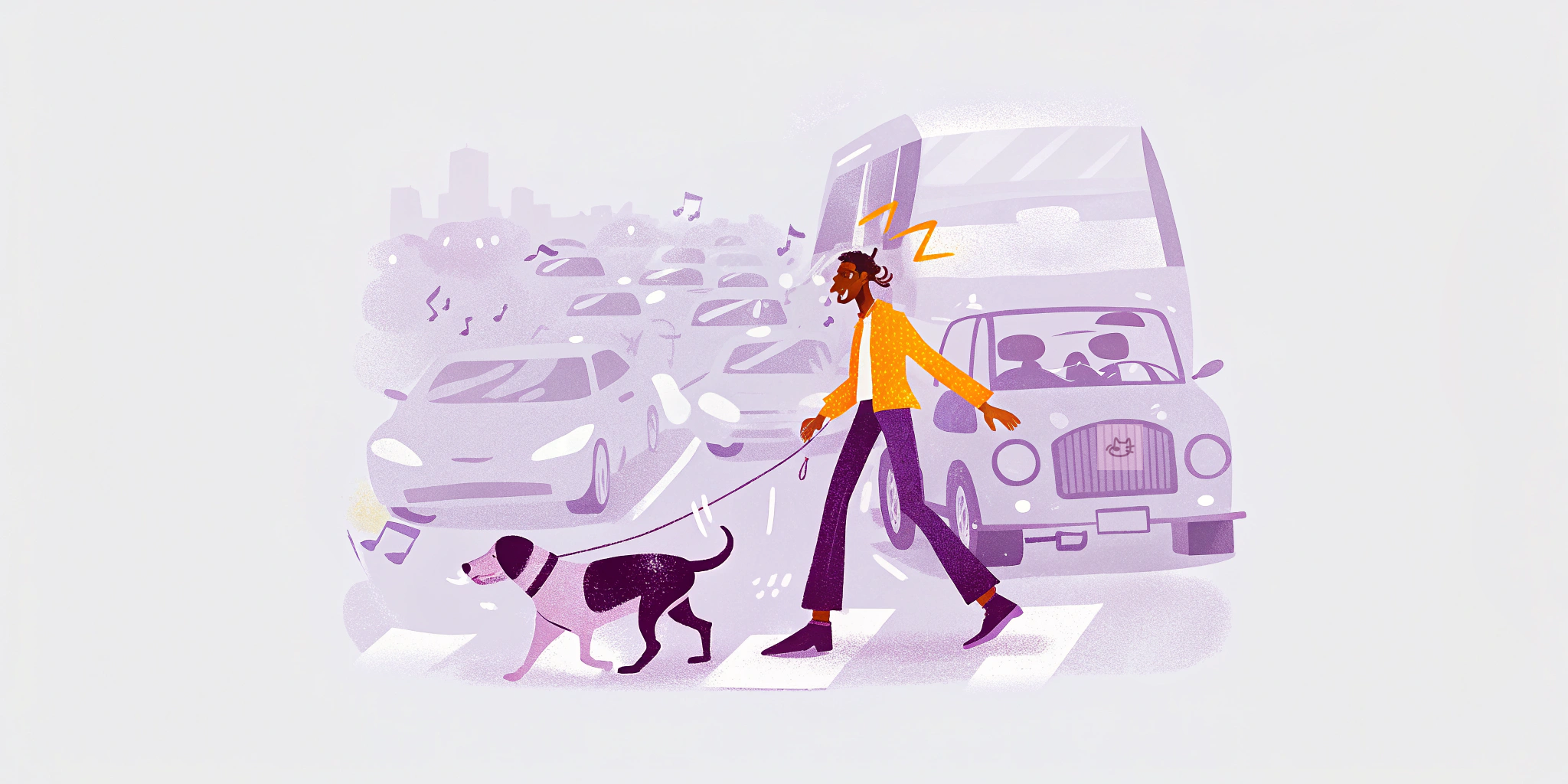
Traffic and Noise Anxiety Solutions
Gradual Exposure Training
Start with low traffic areas and gradually increase exposure. Begin with quiet side streets, then move to busier roads as your dog becomes comfortable.
Week 1: Walk on quiet residential streets with minimal traffic
Week 2: Walk near busier roads but maintain distance from heavy traffic
Week 3: Walk closer to main roads during off-peak hours
Week 4: Practice walking during moderate traffic periods
Sound Conditioning
Play traffic sounds at low volume while giving treats and praise. Gradually increase volume as your dog stays calm.
Use positive associations by feeding meals or giving favorite treats during traffic sound exposure.
For complete training approaches that complement anxiety management, our comprehensive urban training techniques guide provides additional behavioral solutions.

Managing Pollution-Related Anxiety
Air pollution in Indian cities affects dogs' breathing and mood. NBC reports that "air pollution remains a significant health burden, reducing life expectancy by an estimated 5.2 years" in India.
Managing High Pollution Days
- Check air quality before walks. Apps like AQI India help you plan outdoor activities. Now a days, every phone has that in-built under the weather app.
- Use shorter walks on high pollution days. Focus on indoor exercise instead.
- Clean your dog's paws and face after walks to remove pollution particles.
- Use air purifiers in your apartment to improve indoor air quality for both you and your dog.
When outdoor exercise isn't possible, our guide on mental stimulation activities for confined spaces provides excellent alternatives.
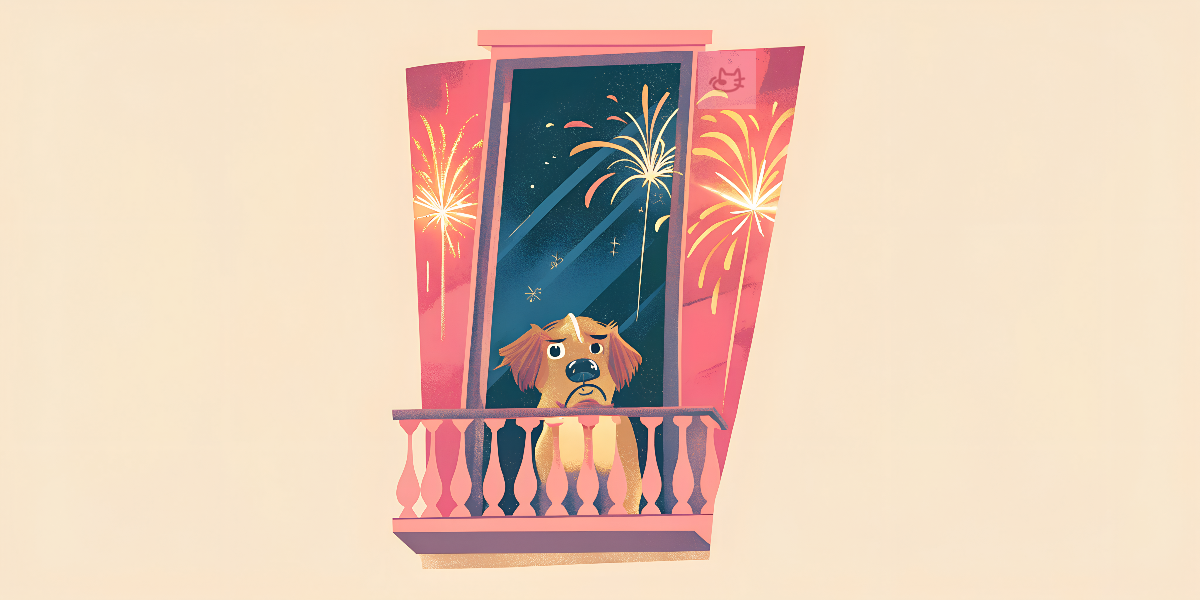
Festival and Celebration Anxiety
Indian festivals create unique challenges for dogs. The sounds, crowds, and activities can overwhelm anxious pets.
Diwali Preparation
- Start training 2 months before Diwali with recorded firecracker sounds at low volumes.
- Create a safe space in your apartment where your dog can hide during celebrations. Use thick curtains and soft bedding.
- Stay home during peak firework times (usually evening of Diwali). Your presence helps calm your dog.
Interestingly, research shows that 70% of Indian pet parents are first-time owners, meaning most families are learning to handle festival stress for the first time.
Breed-Specific Anxiety Patterns
Different breeds react differently to city stress:
High-anxiety breeds in cities: German Shepherds, Border Collies, and Huskies often struggle with urban environments due to their working dog heritage.
More resilient breeds: Indian Spitz, Beagles, and Pugs generally adapt better to city life and apartment living.
Large breeds in small spaces: Labs and Golden Retrievers may develop anxiety when confined to small apartments without adequate exercise.
For detailed information about breed selection for urban living, check our guide on choosing anxiety-prone vs calm breeds for city living.
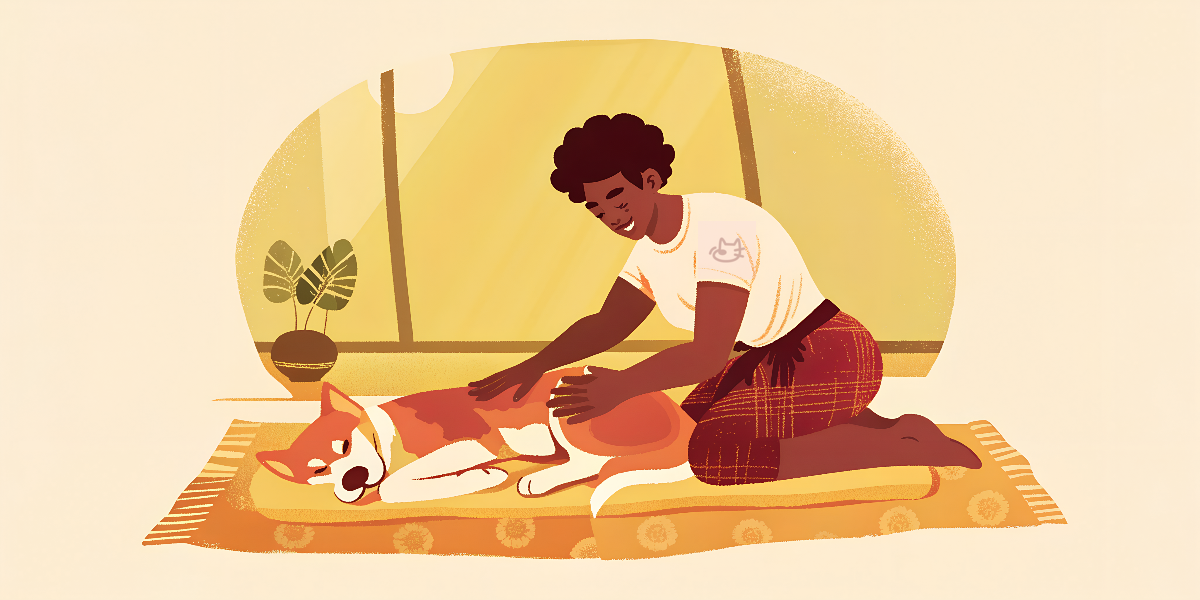
Natural Anxiety Remedies
Calming Techniques
- Massage therapy using gentle circular motions on your dog's shoulders, back, and behind ears.
- Pressure wraps that apply gentle pressure to calm anxious dogs.
Exercise Solutions
- Mental exercise often works better than physical exercise for anxious dogs. Training sessions, puzzle toys, and scent games tire the mind.
- Routine-based activities work well in Indian family structures where household schedules are predictable.
Long-Term Success Expectations
- Mild anxiety: 2-4 weeks for noticeable improvement with consistent training
- Moderate anxiety: 6-12 weeks with professional guidance
- Severe anxiety: 3-6 months combining medication and behavior modification
According to veterinary research, "high comorbidity between anxieties suggests" that addressing one anxiety often helps with others.
City life doesn't have to be stressful for dogs. With proper preparation, expert-backed training, and management techniques, your dog can live happily in any metro city.
Remember that anxiety treatment takes time. Be patient with your dog and celebrate small improvements. Most anxiety problems improve significantly with consistent training and professional guidance when needed.
The key is understanding your dog's specific triggers and addressing them gradually with positive methods recommended by veterinary behaviorists. Every confident, calm city dog started with patient training from caring pet parents.
If you enjoyed this, you might like these:
